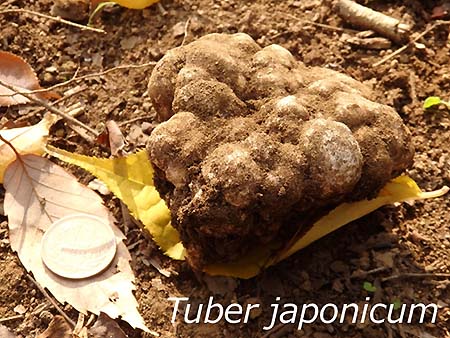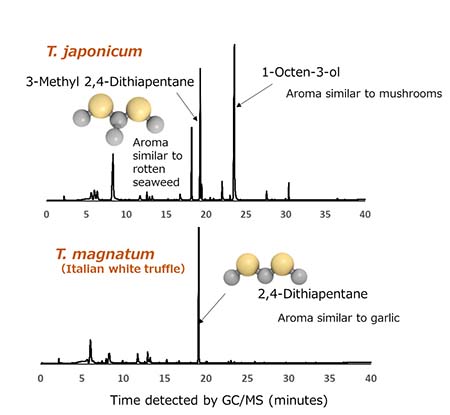Home > Research > Research Results > Research Results 2020 > Japanese white-colored truffles- similar to Italian white truffles but with a different aroma
Update:April 28, 2020
Main content starts here.
Japanese white-colored truffles- similar to Italian white truffles but with a different aroma
| Article title |
Component features, odor-active volatiles, and acute oral toxicity of the novel white-colored truffle Tuber japonicum native to Japan |
|---|---|
| Author (affiliation) |
Tomoko Shimokawa (a), Akihiko Kinoshita (b), Norihisa Kusumoto (a), Shota Nakano (c), Noritaka Nakamura (c), Takashi Yamanaka (c) (a) Department of Forest Resource Chemistry, FFPRI, Tsukuba, Ibaraki, Japan. (b) Kyushu Research Center, FFPRI, Kumamoto, Japan. (c) Department of Mushroom Science and Forest Microbiology, FFPRI, Tsukuba, Ibaraki, Japan. |
| Publication Journal |
Food Science & Nutrition、8:410-418、Wiley、January 2020 DOI:10.1002/fsn3.1325( External link ) |
| Content introduction |
Truffles are mychorrizal fungi that co-exist with beeches and pines and are used in gourmet cuisine. In recent years, many varieties of truffles have been discovered in Japan, and it has been found that several are taxonomically new species. One of these species, Tuber japonicum, was reported in 2016. It is a new white-colored truffle native to Japan (Fig. 1). One of the most famous white truffles is Tuber magnatum, which is native to Italy. Because this Italian white truffles cannot be successfully cultivated and they possess a unique aroma, it is the most expensive truffles. Figure 2 compares the compositional characteristics of Tuber japonicum with those of Italian white truffles. One aromatic characteristic of Italian white truffles is that they contain the compound 2,4-Dithiapentane. On the other hand, "matsutake alcohol" (1-octen-3-ol) has been detected in Tuber japonicum, as well as the compound 3-Methyl 2,4-Dithiapentane, in the methyl group 2,4-Dithiapentane. As of this writing, there have been no other reports about the aromatic component 3-Methyl 2,4-Dithiapentane in truffles around the world. As with European white truffles, the ingredient composition of Tuber japonicum is rich in proteins and minerals, and this is what gives it its unique aroma that makes it attractive as a food material. Presently, efforts are being made to artificially cultivate Tuber japonicum.
Figure 1:Tuber japonicum.
Figure 2:Analysis of the aromatic components of Tuber japonicum (top) and Italian white truffle Tuber magnatum (bottom) |
Copyright © Forest Research and Management Organization. All rights reserved.


